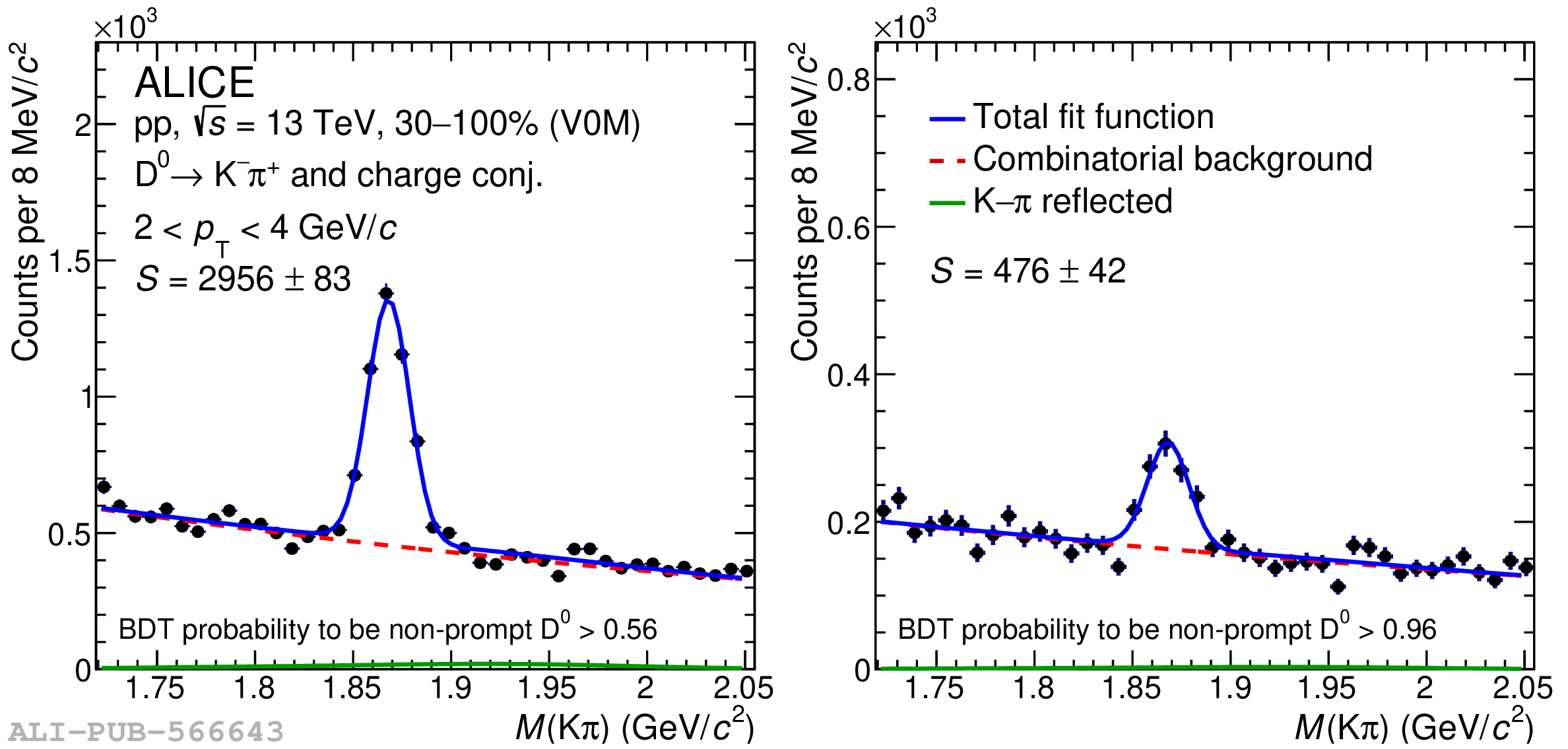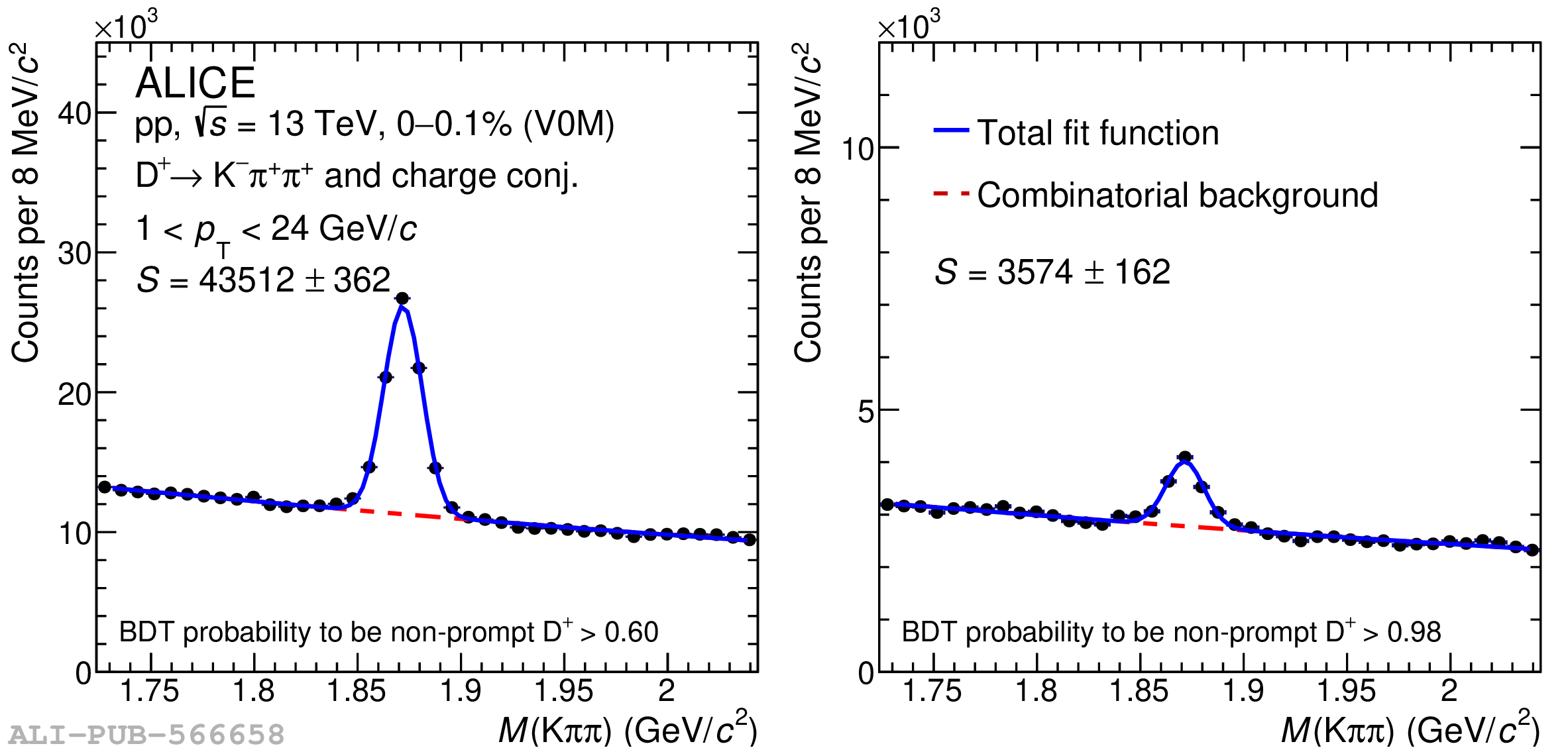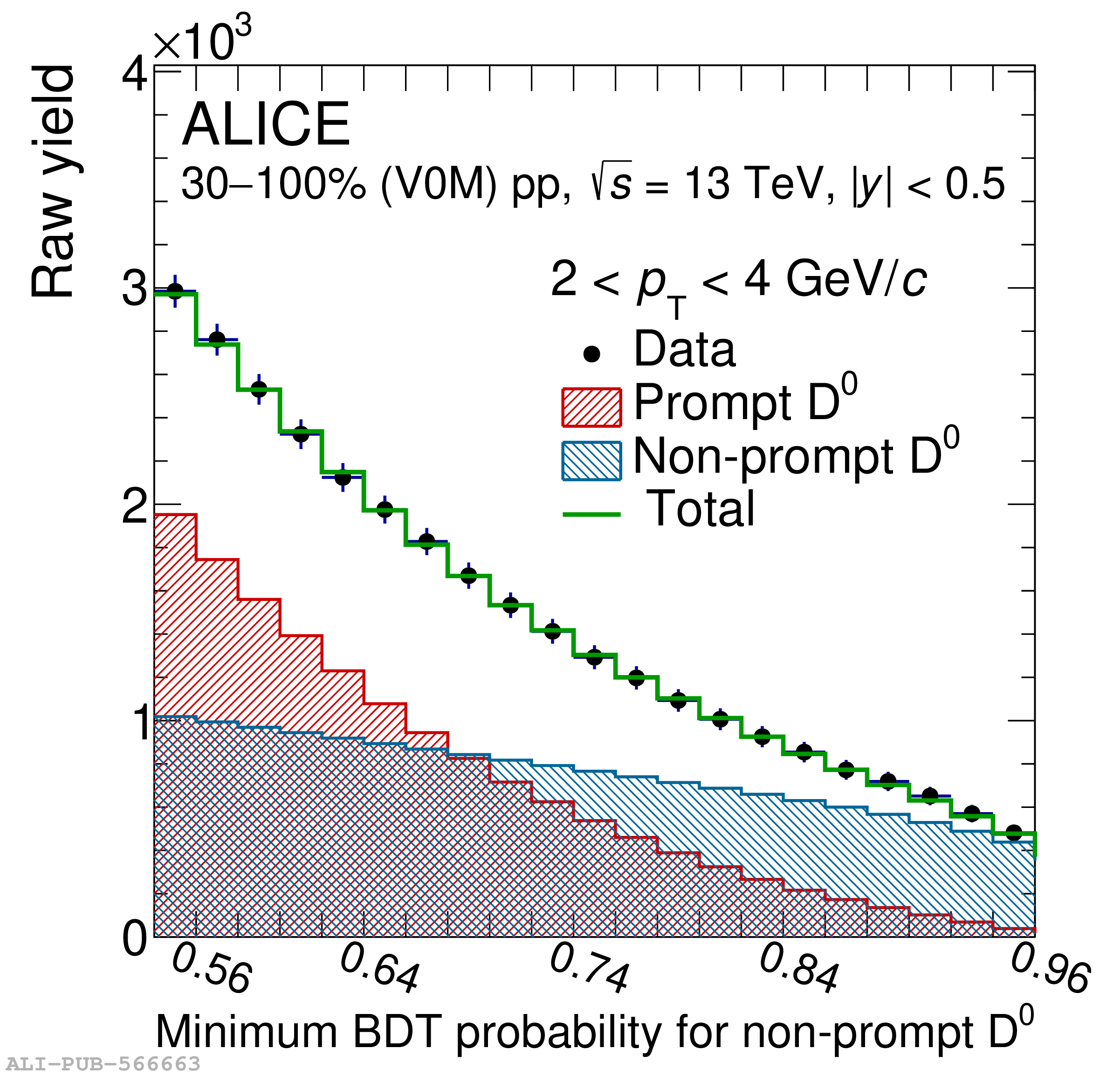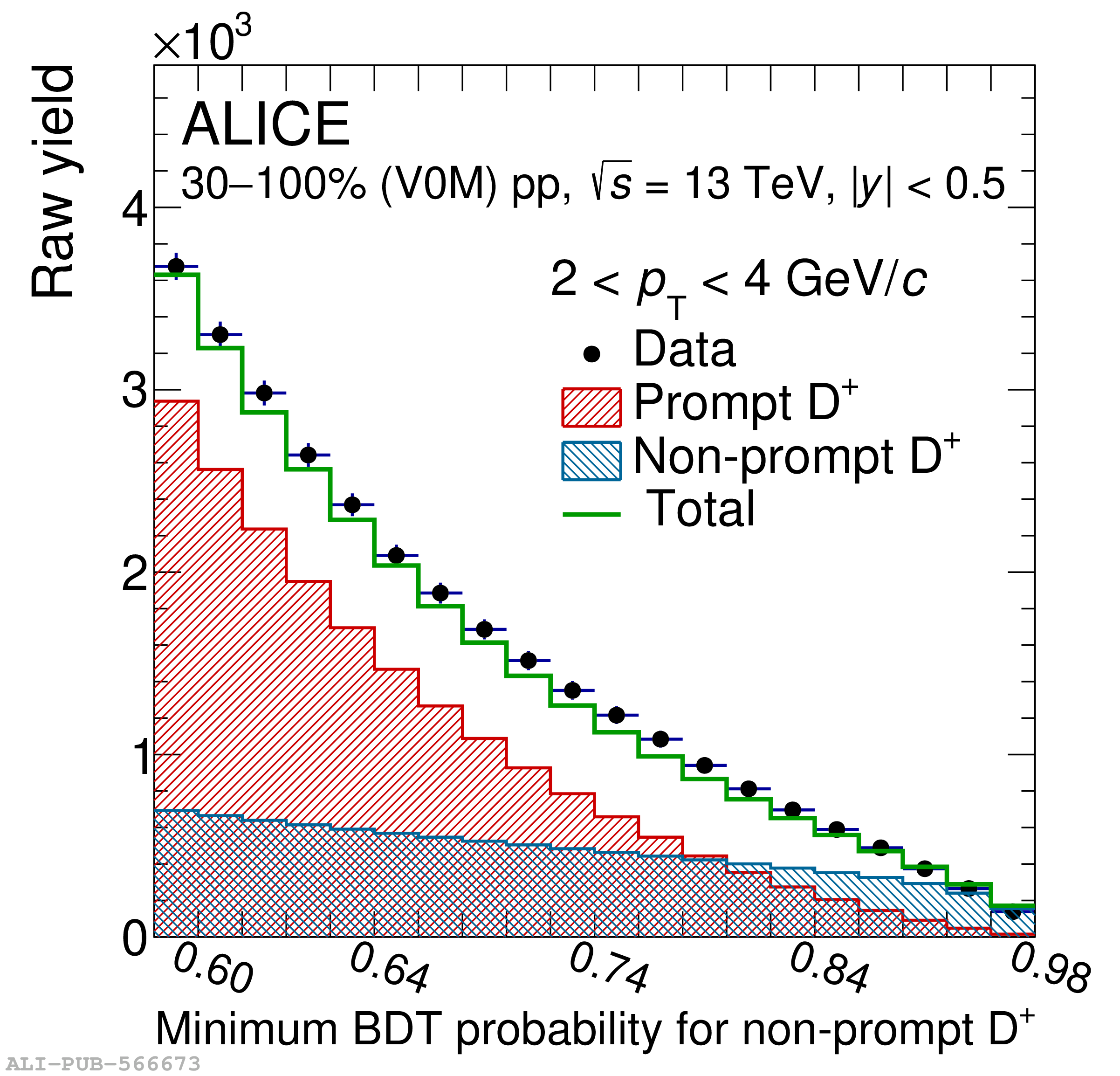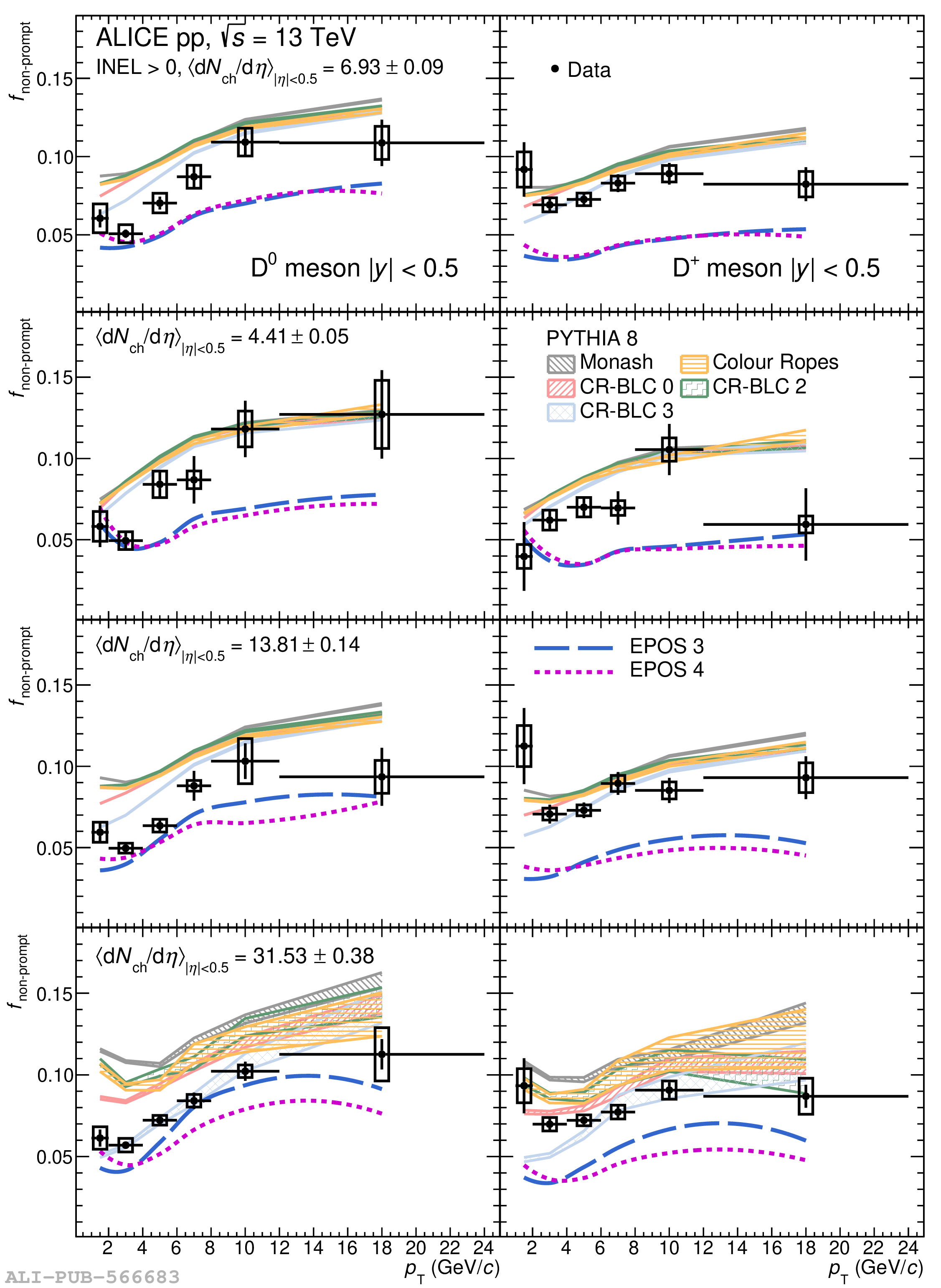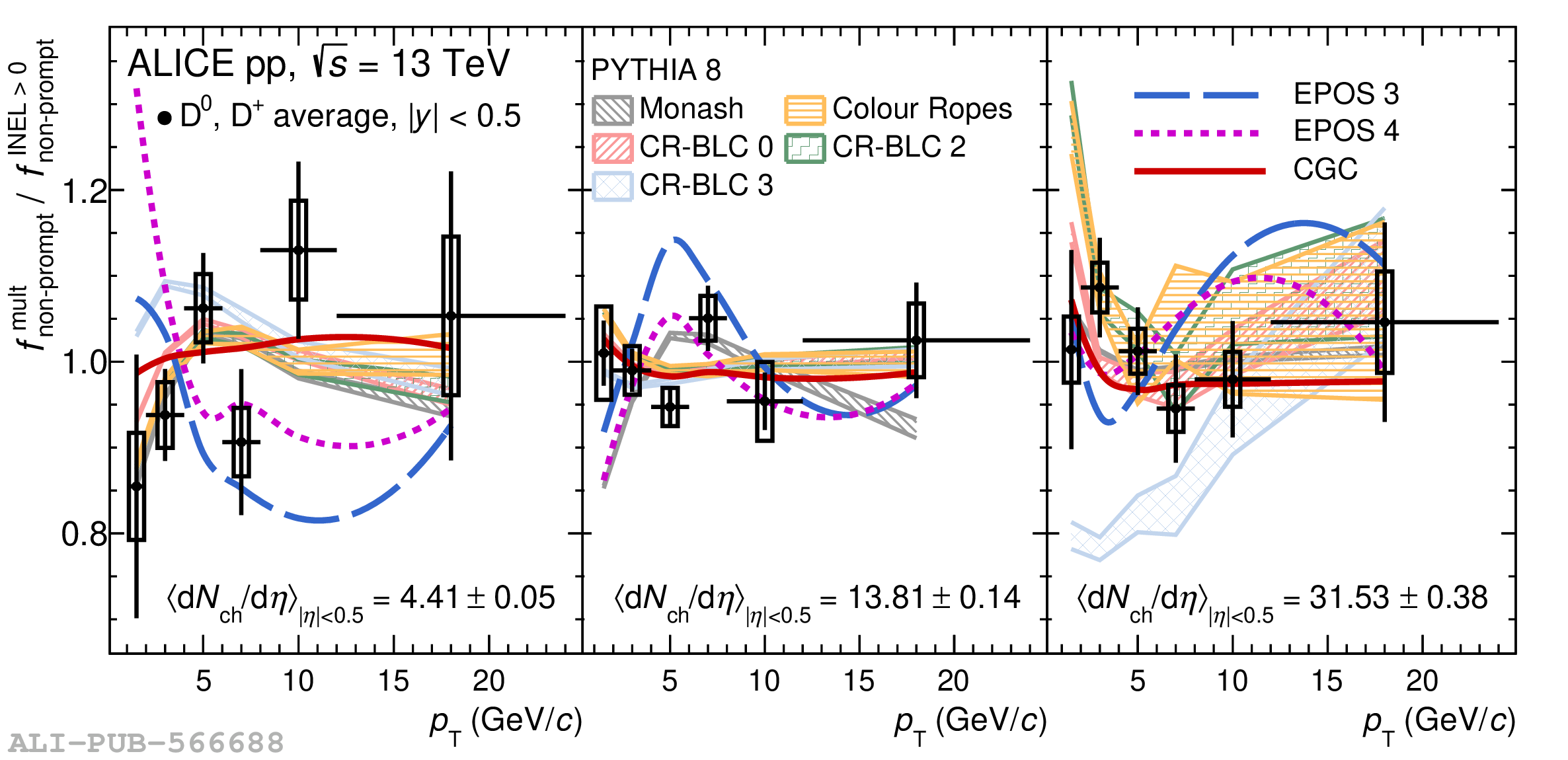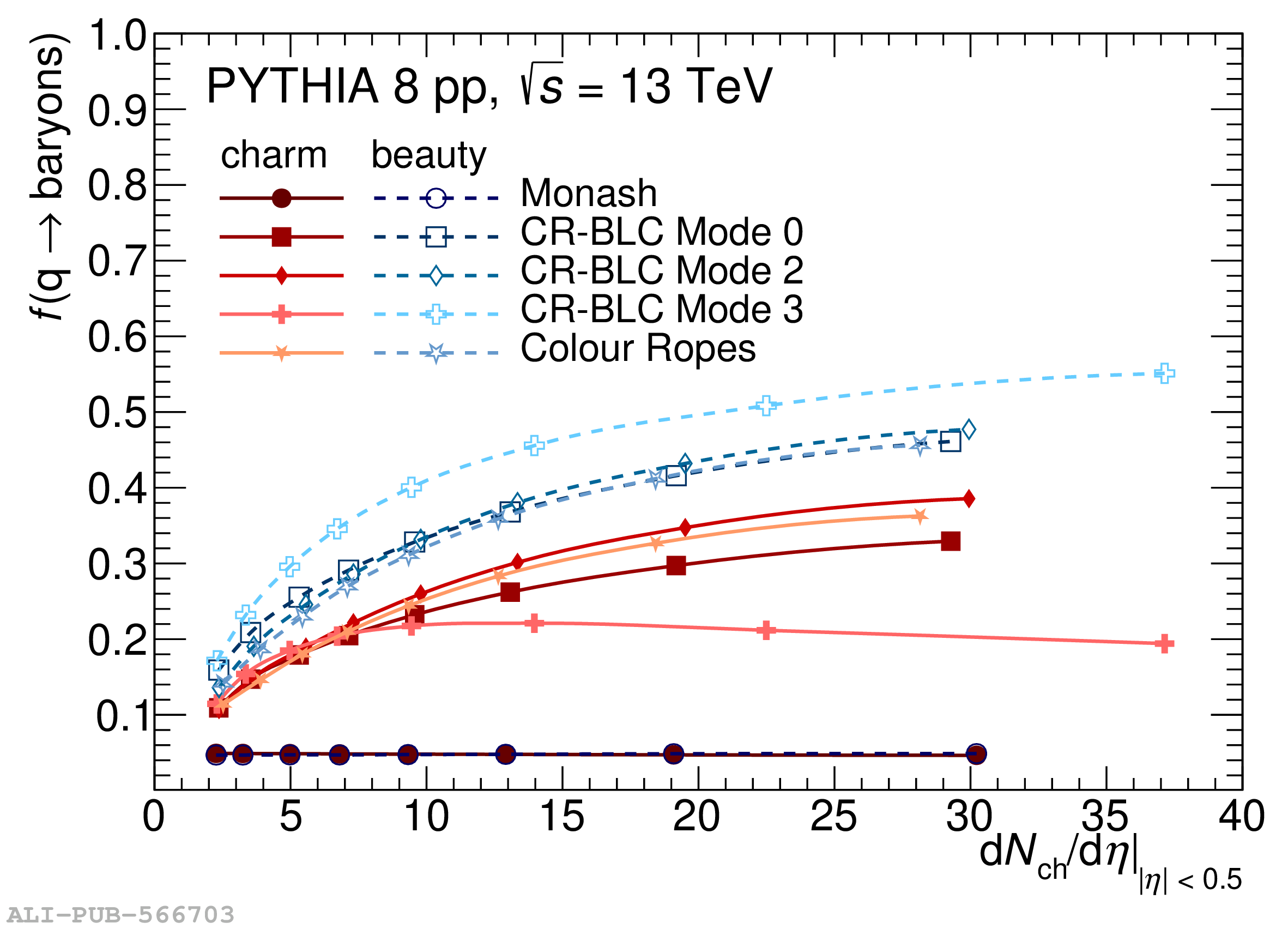The fractions of non-prompt (i.e. originating from beauty-hadron decays) D$^0$ and D$^+$ mesons with respect to the inclusive yield are measured as a function of the charged-particle multiplicity in proton$-$proton collisions at a centre-of-mass energy of $\sqrt{s} = 13$ TeV with the ALICE detector at the LHC. The results are reported in intervals of transverse momentum ($p_{\rm T}$) and integrated in the range $1 <~ p_{\rm T} <~ 24$ GeV/$c$. The fraction of non-prompt D$^0$ and D$^+$ mesons is found to increase slightly as a function of $p_{\rm T}$ in all the measured multiplicity intervals, while no significant dependence on the charged-particle multiplicity is observed. In order to investigate the production and hadronisation mechanisms of charm and beauty quarks, the results are compared to PYTHIA 8 as well as EPOS 3 and EPOS 4 Monte Carlo simulations, and to calculations based on the colour glass condensate including three-pomeron fusion.
JHEP 10 (2023) 092
HEP Data
e-Print: arXiv:2302.07783 | PDF | inSPIRE
CERN-EP-2023-018
Figure group

